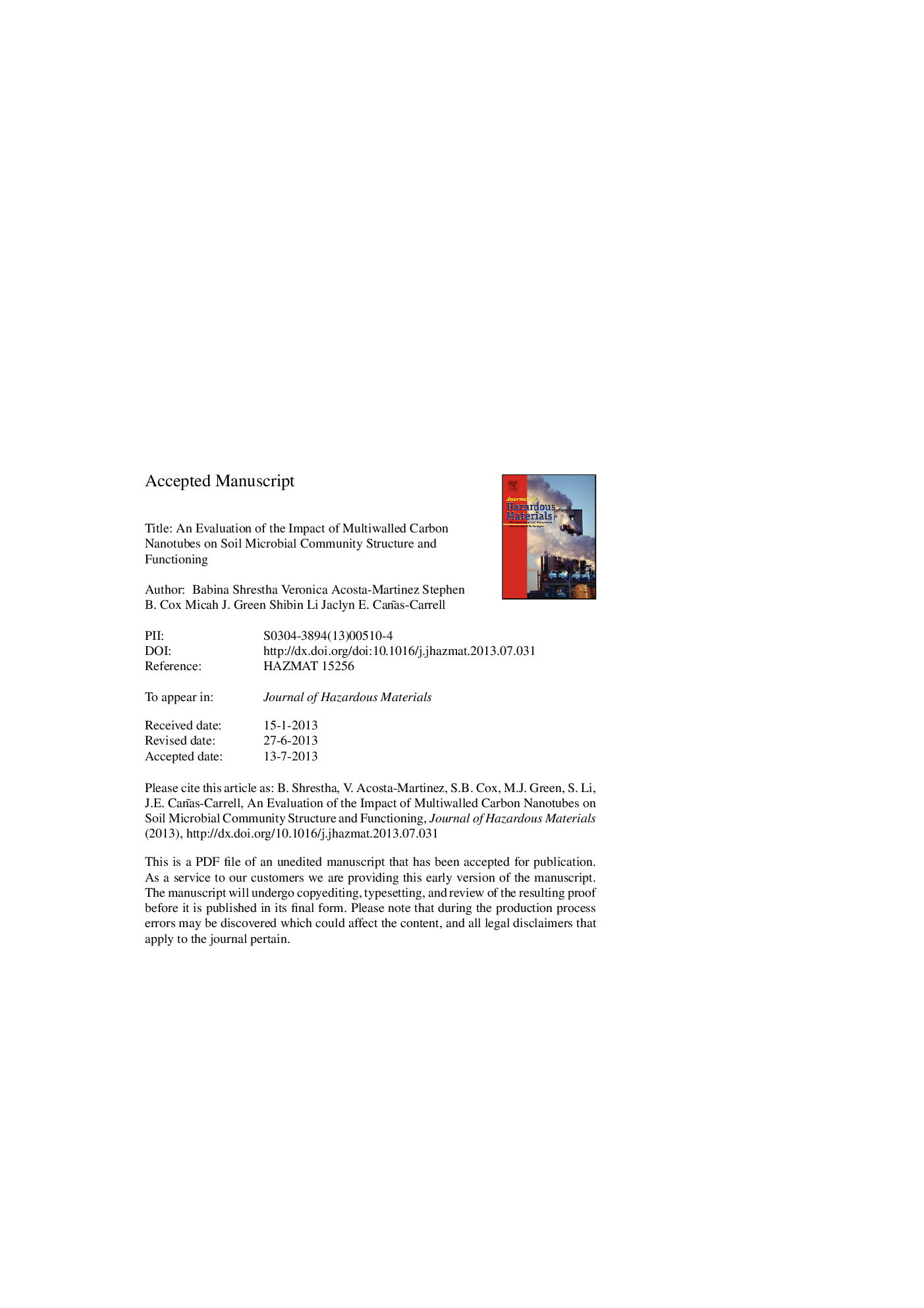| Article ID | Journal | Published Year | Pages | File Type |
|---|---|---|---|---|
| 6971882 | Journal of Hazardous Materials | 2013 | 46 Pages |
Abstract
This study evaluated the impacts of multiwalled carbon nanotubes (MWNTs) on microbial community composition and functioning in a sandy loam soil over 90Â d. We used test concentrations in the range of lower MWNT concentrations (10Â mg/kg) to extremely high MWNT concentrations (10,000Â mg/kg) as a worst case scenario. We observed no effects of MWNTs on soil respiration, enzymatic activities, and microbial community composition at 10, 100 and 1000Â mg/kg. However, increases in fungal fatty acid methyl ester markers were observed at the highest treatment. In addition, pyrosequencing demonstrated a decreased abundance of some bacterial genera like Derxia, Holophaga, Opitutus and Waddlia at the highest treatment while bacterial genera that are considered potential degraders of recalcitrant contaminants (such as polycyclic aromatic hydrocarbons) like Rhodococcus, Cellulomonas, Nocardioides and Pseudomonas increased. These results suggest a shift in soil microbial community composition to more tolerant microbial populations in the presence of extremely high MWNT concentrations. It is unlikely that the change observed at 10,000Â mg/kg is due to metal or carbon impurities as the MWNTs used in this study were of high purity. Given the need for wide-ranging data for regulation and risk assessment of nanomaterials, this study provides valuable data.
Related Topics
Physical Sciences and Engineering
Chemical Engineering
Chemical Health and Safety
Authors
Babina Shrestha, Veronica Acosta-Martinez, Stephen B. Cox, Micah J. Green, Shibin Li, Jaclyn E. Cañas-Carrell,
